Author(s):
Introduction: Chloasma is a condition in which dark patches appear on the skin, most commonly on the cheeks, bridge of the nose, forehead, upper lip, and chin – areas of the face that receive the most sun exposure. In Traditional Chinese Medicine (TCM) the causes of the disease could be Liver-Qi stagnation, Spleen-deficiency, Kidney-Yindeficiency, Kidney-Yang deficiency and Blood deficiency.
Purpose: The purpose of this study is to demonstrate that to have good results when treating chloasma, it is important to consider the root of the problem and not only the symptoms.
Methods: Over two case reports, the first being a 42-year-old woman who sought acupuncture treatment for chronic headache and had the doctor notice the skin stains disseminated on her face, especially in the cheeks area. The second case, a 48-year-old man with constant knee pain was on acupuncture treatment, and at his physical examination, there was found several dark patches on his face. Both patients were diagnosed with energy imbalances (Yin, Yang, Qi and Blood deficiencies) and were treated with acupuncture sessions associated with Chinese dietary counseling.
Results: Both patients had a significant improvement of the chloasma patches, even thought that was not the main cause of complaint. This overall recovery was achieved with the treatment of the patient in a holistic aspect, because when the energies imbalances causing the problem are treated, all the physical and/or emotional symptoms of one or several medical specialties improve at the same time. Conclusion: The treatment of chloasma in TCM has a different point of view from Western medicine, by treating deeply the root cause of the problem in the energy level. Each patient has their own energy imbalance and the treatment must be individualized to have successful results.
The definition of chloasma, also known as melasma or “the mask of pregnancy”, is a yellow or brown pigmentary discoloration of the skin. It appears mostly in women, as it is related to pregnancy hormonal changes, oral contraceptive intake and/or sexual hormonal dysfunction. Exposure to sunlight and nervous disorders may also be linked to the condition [1,2].
The pigmentations appear symmetrically, usually on the forehead, cheeks, perioral, paranasal areas and chin. Lesions manifest as light to dark brown with varied sizes and shapes [1,2].
In Western Medicine, the treatment of chloasma is commonly associated with topical medications and a variety of creams to lighten the hyper-pigmented points. The skin color change is associated to hormones, so, it is believed, once the hormonal level is normalized, chloasma will also disappear [1,2].
However, Traditional Chinese Medicine sees medicine, diseases and therefore, chloasma, in a different perspective. As exposed by the author in several other articles, and as demonstrated by several other studies regarding integrative medicine perspectives and the study of ancient traditions, the body has to be considered as a whole when performing diagnosis and treatment of any pathology [3-9]. According to TCM, there are several types of energy present in the body and the balance between them is what creates health [10,11].
For the compilation of this article, the author based her perspective and pathways of treatment in a specific case of a patient the author had in 2006. This patient was a 70-yearold patient, who reported pain in the legs and was diagnosed with Kidney-Yang deficiency, according to TCM. He received treatment with Chinese dietary counselling, acupuncture and auricular acupuncture associated with apex ear bloodletting [3-9].
With the treatment done, the pain in the legs diminished and the patient was submitted to an interview after the treatment. In this interview, 30 days after the treatment, the patient revealed that his eye pressure had also lowered with the treatment, as his ophthalmologist confirmed. During the treatment, he had not reported to be treating glaucoma in the last 40 years with no improvement of his condition, with intraocular pressure always appearing at 40mmHg or more. With the treatment performed, his pressure lowers to 17mmHg [3-9].
This interesting case became the cornerstone of the author studies in the field, trying to comprehend how the treatment based on the root of the problem could treat different diseases and symptoms simultaneously and using the same methods [3-9].
The aim of this article is to show a different way of treating chloasma, considering the energy imbalances as the root of the problem, and treating these energy imbalances may be possible to treat chloasma successfully
It is another goal to promote the effectiveness of Traditional Chinese Medicine in a small scale. As several studies of the author demonstrate that, using only this theory during the past decade, and using tools of ancient medical traditions such as Chinese dietary counselling, auricular acupuncture, systemic acupuncture, apex ear bloodletting, chakras measurement, homeopathy, crystal-based medications and moxibustion it is possible to treat a range of pathologies, among them, chloasma.
This study also aims to be a trigger for further studies regarding the use of ancient traditions in the treatment of chloasma
The methods used was composed of a literature review of what is current know regarding chloasma in Western Medicine, the up-to-dates studies and general reviews about the subject. A literature review of chloasma and Traditional Chinese Medicine was also done. All the articles used were PubMed indexed. For illustration purposes, two case reports of patients treated by the author were also used.
The patient A.M.P., 45 years old, started looking for acupuncture in order to treat disc herniation on the lumbar L4 and L5, accompanied by arthrosis and monoparesis in one of the legs. Because of the monoparesis, she fell and tore the ligaments of her right ankle. Unsatisfied with her orthopedic treatment, she sought treatment with Traditional Chinese medicine. The patient also presented chloasma symptoms and obesity - and although they were not her complaint. In Traditional Chinese Medicine, she was diagnosed with deficiency of Yin, Yang, Qi, Blood and Heat retention.
Treatment was started with Chinese dietary counselling, auricular acupuncture associated with apex ear bloodletting and systemic acupuncture.
The Chinese Dietary counselling received was to avoid dairy products, raw food, cold beverages and sweets. She was also oriented to avoid coffee, soda and matte tea. The last group of foods the patient was oriented to avoid was chocolate, fried food, eggs, honey, alcoholic beverages, and coconut.
Regarding diet, the most important orientations was to drink lukewarm water, avoid raw food and dairy products. The auricular acupuncture points used are described in Figure 1. The points used had the main goal of rebalancing the energy of the patient. They were Shen Men and Kidney to treat the Yin and Yang; Liver, Lung, and Spleen to treat the Blood Deficiency; and Large Intestine to treat Hunger, and Anxiety (Fig. 5). If the Yin/Yang and Blood Deficiencies are treated, Qi deficiency will improve as well.
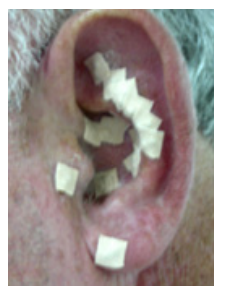
Figure 1: Auricular Acupuncture Points Used.
The patient also received apex ear bloodletting, as demonstrated on Figure 2.
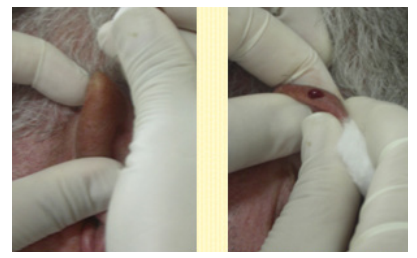
Figure 2: Apex Ear Bloodletting procedure.
With this treatment, the patient presented some improvement, but did not improved completely. Due to other symptoms the patient had, he was oriented to pass through the procedure of radiesthesia, to measure the level of energy of her chakras.
The measurement resulted in all chakras in level 1 of 8, with exception of the seventh chakra, which was normal (8). Then, new tools of treatment were introduced to replenish the energy of the chakras. They were crystal-based medications and homeopathy based on the theory created by the author entitled Constitutional Homeopathy of the Five Elements based on Traditional Chinese Medicine, which will be described on the Discussion session.
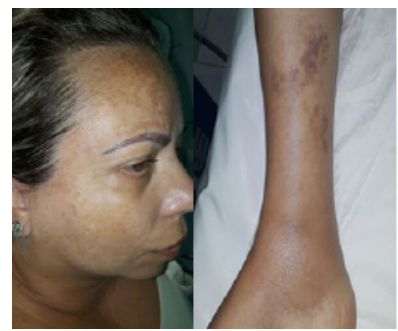
Figure 3: Patient Case 1 with Chloasma Patches before Treatment.
Around the year of 1995, the patient L.C.B., male, then 22 years old, had a severe case of allergies due to an accident with herbicides applied without protective equipment. For several years, his allergies would come and go. Thedermatologist responsible for his treatment stated that the allergies would be a permanent condition to the patient. About five years ago, the patient was undergoing orthopedic treatment for epicondylitis on the right elbow and severe knee pain, when the physician suggested that an acupuncture treatment was started before undergoing surgery.
The patient underwent sessions of systemic and auricular acupuncture with Apex-Ear Bloodletting. During physical examination, the TCM specialized physician identified abnormal spots on his face, a result of chloasma, a condition also treated simultaneously by acupuncture.
Adding to his orthopedic symptoms and allergies, the patient later presented severe case of angioedema, as well as edemas of the eyelids and penis. In case of urgency and without an available dermatologist that day, the patient sought the acupuncture clinic again and obtained regression of these symptoms only with acupuncture and Apex Ear Bloodletting, not needing to take any steroid or antihistamine medication.
Although it was not his main complaint, it was through the Chloasma symptoms that the diagnosis of energy deficiencies was possible, especially Blood deficiency and deficiency of the Kidney, the latter being responsible for the symptoms of knee pain and Liver and Gallbladder energy imbalances, which led to the process of epicondylitis in the elbow.
The radiesthesia method was used. The chakras energy was evaluated in a scale of 1 to 8, being 1 the minimum possible energy in the chakra and 8 the recommended result. This patient had all chakras in level 1 of energy. The patient received the same treatment as in the first case, with homeopathy and crystal-based medications, which will be described on the Discussion session.
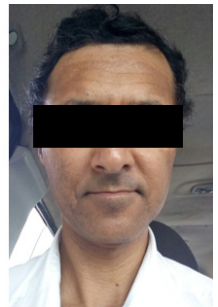
Figure 4: Case Report 2 Patient Showing Chloasma Patches before the Treatment.
The patient in the first case report was treated systemically. She had different issues, both emotional and physical (obesity, anxiety, equilibrium problems, back pain, low selfesteem, orthopedic issues), were all being treated when the physician treated the energy disturbances of the patient. Her chloasma patches disappeared in a few weeks, without the use of any sort of topical medication, (Figure 5).
In the second patient case the result was similar. As Traditional Chinese Medicine focuses in the patient’s energy imbalance as root of the variety of symptoms presented (allergies, epicondylitis, and knee pain), acupuncture was able to improve all of the patient’s condition at the same time, even those he was not conscious of, which in this case, was chloasma.
The photos of the second patient are not available, but he also presented great improvement in his chloasma patches.
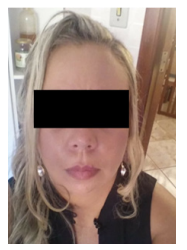
Figure 5: Results Case 2
A Brazilian survey made in 2006 by the Brazilian Society of Dermatology (BSD), 8.4% of the diagnoses in dermatologic consultations resulted in Chloasma. This puts chloasma representing the third largest group of diseases in dermatological practice [13].
Another study, performed in Nepal in 2008, with 546 dermatological patients, also identified melasma as the fourth most frequent diagnosis. In addition, a retrospective study conducted in Saudi Arabia, also described pigmentary changes as the fourth most common dermatosis [13].
Chloasma also has an important impact on appearance, and causes emotional distress, reducing life quality of the affected patients. Another important point is the high expenditures related to medical treatments and procedures [13]. As chloasma affects mainly the face, it is a visible and constant presence in the daily life of patients. Commonly, patients report feeling shame, low self-esteem, anhedonia, dissatisfaction and lack of motivation of going out of the house. Even suicidal thoughts already been reported in different studies [1-2,13]
The disease appears mostly in female patients. A recent study showed that of 6032 studied patients, 57,1% were females [14]. This relation between chloasma and female patients can be explained by the close relationship between the disease and hormonal alterations and disorders. For example, there is a close relationship between chloasma and progestational oral contraceptives [15].
According to varied studied, there is no universally effective therapy for the disease. All the existing agents have varied degrees of effectiveness, and the condition has a large relapse statistic [2, 16,17].
Most of the times, the treatment is performed with topical agents, such as corticosteroids. Other modalities of treatment are also used, as the use of chemical peels and therapies performed with laser and intense light pulses [17]. Oral therapies are also emerging as treatment.
However, the majority of the treatments cannot be performed in pregnant women, or during postpartum period. In women who are undertaking contraceptive progesterone pills, the effectiveness of the treatment can also be diminished [2,16,17].
Several literature articles regarding Traditional Chinese medicine present effectiveness in the use of auricular acupuncture, systemic acupuncture and Chinese herbs to treat chloasma/melasma effects [18-21].
In the article of Feng XJ, Fu JY and Liu F, entitled Clinical observation on the combined use of acupuncture and herbal medicine for treatment of chloasma, the author concludes that the combined use of acupuncture and herbal medicine may yield definite therapeutic effects in treating chloasma patients [18].
In the article entitled Acupuncture as a Treatment Modality in Dermatology: A Systematic Review, it is also established that acupuncture appears to improve outcome measures in the treatment of dermatitis, chloasma, pruritus, urticaria, hyperhidrosis, and facial elasticity. Future studies should ideally be double-blinded and standardize the control intervention [19].
Another article from Shi HF entitled Clinical observation on the treatment of chloasma by Chinese herbs combined with acupuncture, the combined use of acupuncture and Chinese herbal therapy appears to have great effect in treating chloasma [20].
A last note has to be taken for the study of Xing Wu, entitled The Effects of Acupuncture Combined with Auricular Acupressure in the Treatment of Chloasma, which investigates the use of auricular acupuncture, a modality similar to the one used in this study. However, the author compiles the treatment with several other techniques, such as apex ear bloodletting, Chinese dietary counselling, homeopathy and crystal-based medication to replenish the energy of the chakras [21].
A last note has to be taken for the study of Xing Wu, entitled The Effects of Acupuncture Combined with Auricular Acupressure in the Treatment of Chloasma, which investigates the use of auricular acupuncture, a modality similar to the one used in this study. However, the author compiles thetreatment with several other techniques, such as apex ear bloodletting, Chinese dietary counselling, homeopathy and crystal-based medication to replenish the energy of the chakras [21].
Many other articles of the author sustain the idea that is important to comprehend and address the principles of Traditional Chinese Medicine to be able to treat effectively using ancient traditions tools, such as systemic and auricular acupuncture, apex ear bloodletting and Chinese dietary therapy [22-25].
To be able to use these tools in an effective manner is
important to know the theories that base TCM’s logic and
treatment. These theories are Yin, Yang, and Five Elements
Theory. [22-25]
Yin and Yang are two opposite and complementary forces.
According to many oriental traditions, the concept of Yin
and Yang was created to state and defined as complementary
opposites. Observing nature, the seasons, the moon cycles,
the sun, the concept was symbolized in Figure 1 [22].
The symbol, better known then its meaning, shows the cyclical rotation of these two opposite forces. In the representation in Figure 6, it gets easier to understand the main principles behind the concept [22-24].
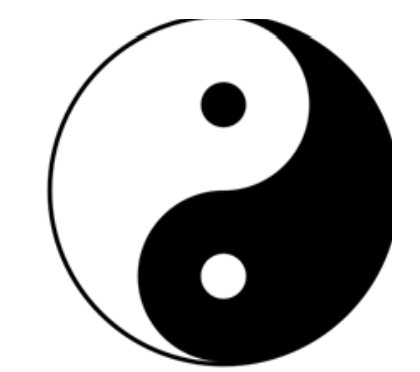
Figure 6: Yin and Yang
In Traditional Chinese Medicine, Yin and Yang are of major importance for the body’s health [19]. The Yin and Yang energy are influenced by the diet, and life style, and according to the ancient Chinese man, have great influence on the systemic functioning of the body and its organs. When there is disruptance to this balance, deficiency or excesses of Yin and Yang may appear. As Yin and Yang must always be balanced for the proper working of the body, this would reflect in the symptoms and many times create other different energy deficiencies and related problems, which would cause other symptoms, worsening and maintaining the pathologies [22-25].
Several other studies discussed the Yin and Yang concept.
One specific study from Tom Szeto addressed the similarity
between the Yin and Yang and the oxidation-antioxidation
theory [22].
Chloasma is specifically linked to one energy deficiency of
Traditional Chinese Medicine, Blood deficiency [26].
The concept can be understood as almost the same of anemia for Western medicine. The concept of Blood energy is an anemia in the energy level. Therefore, a blood count exam resulting in normal does not rule out the possibility of anemia, because when the patient has anemia, this is compensated by the release of more blood by the Liver, which is the body’s bloodstock, for the peripheral vessels [3-9].
If the results come back confirming anemia, in this case it is possible that the patient’s blood deficiency has been developing itself and going untreated for years. For the Blood deficiency to be caught in a laboratory exam, especially one drawn in a peripheral blood vessel, the body’s bloodstock is empty, which represents the seriousness of this case and very aggravated symptoms [25].
Chloasma is often associated with Blood deficiency. Therefore, the main treatment will be to the rebalance the energies and not only treat the symptoms, as do the common topical or oral medications, and also the laser peels and other sorts of treatment [26]. The appearance of melasma is also very common during the postpartum period. In postpartum, chloasma is very common due to iron depletion from the mother to the baby itself, leading to iron deficiency and consequently, low blood production and anemia [26].
This is also very common because of western’s eating habits. Postpartum, the woman usually carries on to her regular life, ingesting dairy products, cold water, raw food, which induces the imbalance of the Spleen-pancreas meridian, responsible for the absorption of nutrients, reducing the production ofBlood and leading to the anemia symptoms [26].
Even if the new mother takes vitamins and iron pills for replacement at this stage, it is common for the body’s not to absorb it, consequently leading to, maintaining and increasing the case of Blood deficiency and chloasma patches [3-9].
The author developed the metaphor of the tree as a way of understanding the differences between the treatment and diagnosis reasoning proposed by Western and Traditional Chinese Medicine. The metaphor serves the purpose of demonstrating these differences and the importance of a treatment on the root level.
The tree (Figure 7) has a trunk with several branches. Each branch represents one medical specialty and each leaf coming out of each branch represent the symptoms and diseases of each specialty. The leaves and the branches are the visible part and the object of study and practice in the western medical profession. The focus is to treat each leaf in each specialty. The treatment proposed by the author aims to treat all the tree, through the root to reach a “health leaf ” [3-9].
There, in this root, there is energy that when balanced can generate health to the whole tree. The reason of this study is to address which are the energy alterations present in the root level, responsible for chloasma symptoms [3-9].
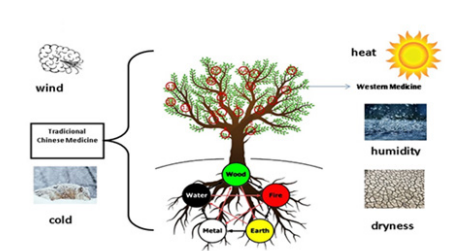
Figure 7: Schematic Drawing of the Views of Western and Traditional Chinese Medicine.
The way Blood deficiency cannot always be identified in a blood count says a lot about the concept of progression of health to disease.
Before a disease is diagnosed at the laboratory, radiological level or by complementary tests, there has already been an alteration in energy level, where the patients have symptoms but the tests are still normal. There are various phases where disease progresses in a healthy body. In Table 1, during phases 1 to 3, only a slowing of the organ functions occur because of energy imbalances, and the patient has and complains of symptoms, but the results of laboratory exams are normal. At phase 4 the laboratory exams show some alterations, and the disease is still curable, and at phase 5, the exams are very altered, and the cellular damage is irreversible and the disease incurable [3-9].
| Progression of Health To Disease | ||||
|---|---|---|---|---|
| Organ | Exams | Energy Reserve | Symptoms | |
| Phase 1 | Slowing down of organ functions | Normal | Energy Reserves Normal | without clinical symptoms |
| Phase 2 | Slowing down of organ functions | Normal | Consumption of internal energy reserves | with symptoms in other organs |
| Phase 3 | Slowing down of organ functions | Normal | Consumption of External energy reserves | with symptom in same organ |
| Phase 4 | Reversible Cellular Lesion | Little alteration | Consumption of Blood reserves | Curable Disease |
| Phase 5 | Irreversible Cellular Lesion | Excessive alteration | Metabolic exhaustion | Incurable Disease |
TCM sees the etiology of pigmentation disorders being related to external factors, especially invasion by Wind, pathogenic factors, which may disturb Qi and Blood and cause Blood deficiency, disharmony of the internal organs, particularly the Liver, Spleen and Kidneys, which leads to pigmentation dysfunction [26].
The face depends on nourishment by the main organs to maintain its color and bloom. Any disturbance in this function can result in the facial skin being deprived of nourishment and therefore the patches appearing [26].
The foods are believed to have energy properties similar to our bodies and all nature. Therefore, eating habits can be responsible for many pathologies in the energy level, and the opposite is true. As stated, Hippocrates: “Make your food your medicine, and your medicine your food”[3-9, 27-29].
In order to avoid a deficiency of energy of the SpleenPancreas, responsible for the absorption of nutrients, this energy meridian being the gateway to nourish all the organs of the body; if this meridian weakens, all other internal organs will weaken due to failure of nutrient absorption, leading to lower blood production and malnutrition of all organs. [3-9, 27-29].
To avoid aggression of Liver energy, we should normally advise the patient to avoid such foods: fried foods, eggs, chocolate, honey, coconut, alcoholic beverages, cow’s milk and all dairy products, especially when the cheese is melted. The emotion that unbalances the energy of the Liver is anger [3-9, 27-29].
To preserve the energy of the Liver, in addition to dietary counselling, we should look at the types of medications that the patient is routinely using, ideally avoiding medications in high concentrations that cause the vital energy deficiency [3-9, 27-29].
The foods that usually unbalance the energy of the Kidney are soda, coffee and matte tea. Usually, the patient should be instructed to ingest the same amount of water when taking soda, so that dehydration does not occur and consequently loss of kidney energy [3-9, 27-29].
When the patient ingests alcoholic drink, mainly beer, it should be advised to take twice the amount of water of the amount of alcoholic beverage [3-9, 27-29].
In addition, to avoid the energy deficiency of the Kidney, we advise the intake of water, preferably warm, one liter for each 25kg of the patient’s weight [3-9, 27-29].
As it is the night that replenishes the energy of the Kidney while we sleep, it is recommended that the patient sleep early [3-9, 27-29].
The foods that lead to the deficiency of the Spleen-Pancreas are dairy products, cold liquids, raw food and sweets [3-9].
The emotion when chronically installed without treatment is the excessive worry, and it is very common for men and women to develop anemia due to excessive worry
When the Spleen is deficient, it cannot generate enough Qi and Blood to hydrate the face and the skin. With the worsening of the Heat, the chloasma will spread in the face, reaching the forehead and deepening in color [3-9].
In addition, long-term excessive sexual activities damage
Heart and Kidney Yin, depleting Water, which therefore fails
to control Fire. Deficient-Fire prevents the face from being
moistened or nourished and results in the brown macules
symptoms of Chloasma [3-9].
This Spleen-Pancreas deficiency is very common in patients
who have a very intense menstrual period, justifying the
prevalence of the disease in women. These patients, because
they have a deficiency of Blood, can generate internal
heat formation, this being a second cause to maintain the
imbalance of the menstrual cycle, leading to greater loss of
blood in quantity and days, becoming a vicious cycle which
leads to the generation of chloasma patches on the skin [3-9].
The acupuncture points used in both case reports are described in Figure 8. The goal here was to restore the energy of Yin, Yang, Qi and Blood, as well as taking out Heat Retention with apex ear bloodletting [3-9].
Auricular acupuncture, is an acupuncture technique similar to reflexology, and is speculated that the technique works because groups of pluripotent cells contain information from the whole organism and create regional organization centers [3-9] representing different parts of the body, through recruitment of more cortex cells dedicated to specific areas of the body. Thus, stimulation of a reflex point in the ear can relieve symptoms of distant pathology with a reliable duration [3-9].
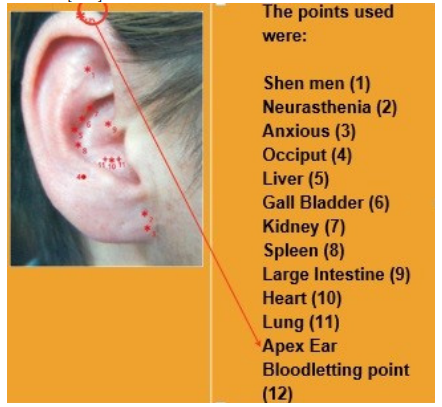
Figure 8: Auricular Acupuncture Points Used
Systemic acupuncture was also used; the points used were ST36, LI4, LR3, GB34, SP6, KI3, KI6, CV4, CV6. All points bilateral.
According to Ayurvedic Medicine, seven main chakras connect to nerve points or plexuses in the body. These seven points are related to the nervous system and endocrine glands [3-9].
Chakras are centers where major nerve points meet and where life force, or “prana,” flows harmoniously. The Chakras correspond to the massive organs to the Five Elements on the Traditional Chinese Medicine, according to several scholars. For example, the article The Scientific Basis of Integrative Medicine, written by Washington, as well as the article entitled The Geometry of Emotions: Using Chakra Acupuncture and 5-Phase Theory to Describe Personality Archetypes for Clinical Use.
Hindu and Buddhist traditions believe that when the flow of energy is blocked, it disrupts physical, emotional, and mental health.
Regarding the body, the Five Elements theory is the substantial for the comprehension of the functioning of the human body. Five Elements theory states that there are five elements present in everything in the world, including our bodies. These elements are: Water, Fire, Earth, Metal and Wood [3,4].
Inside our bodies, these elements will be represented by specific organs of our body. These organs are considered to be the main organs, and they have extremely important functions in the well-functioning of the body. They are completely interconnect, as the main principle of the Five Elements theory is to understand the idea of cycle, previously presented in the Yin and Yang section. The Wood element corresponds to the Liver, The Fire element corresponds to the Heart. The Earth element corresponds to the Spleen, The Metal element corresponds to the Lungs, and the Water element corresponds to the Kidney [3,4].
By measuring the energy of the seven chakras, we are actually measuring the energy of the 5 massive organs of the 5 elements, Figure 9. Therefore, the fifth chakra corresponds to the energy of the earth or the Spleen-pancreas, the fourth chakra corresponds to the energy of the air or the Lung, the third chakra corresponds to the Fire or energy of the Heart, the second chakra corresponds to the energy of the Water or Kidney, and the first chakra corresponds to the energy of Wood or Liver. The sixth is directly connected to the energy of the second chakra, or the Kidney; and the seventh chakra is directly related to the first chakra, or the Liver [3,4].
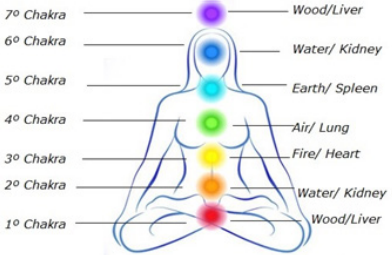
Figure 9: Chakras and Five Elements Correspondence.
When connecting Traditional Chinese Medicine and Ayurvedic Medicine, it is possible to to associate the homeopathy medicines to the treatments regarding treating energy deficiencies, and therefore associate the best
homeopathy for each chakra and massive organ [7-8].This theory was developed by the author and presented in the LMHI in Buenos Aires in August 2016, later presented in Vienna, Austria, on the European Homeopathic Conference, in November 2016. It was also presented on the LMHI in Cape Town, South Africa, September 2018.
In the case, for example, of imbalance of the first chakra, which corresponds to the organ Liver, in the Theory of the Five Elements, the Wood, we can use the Phophorus [7,8]. The imbalance of the second chakra, which corresponds to the Kidney, which is the Water Element in the Theory of Five Elements, can be treated with Natrium Muriaticum [7,8]. The imbalance of the third chakra, which corresponds to the Heart, which is represented by the element Fire, can be treated with the Sulfur. [7,8].
The imbalance of the fourth chakra, which corresponds to the Lung organ, represented by the element Air, can be treated with Silicea [7,8]. The last chakra, the fifth one, which corresponds to the Spleen organ, represented by the Earth element, can be treated with Calcarea Carb [7,8]. The crystal based medication and the homeopathy medication correspondent to each chakra are described in Table 2.
| Chakras | Five Elements | Homeopathy Medications | Crystal Bases Medications (32) |
|---|---|---|---|
| 1˚ Chakra | Wood/Liver | Phosphorus | Garnet |
| 2˚ Chakra | Water/Kidney | Natrium muriaticum | Orange Calcite |
| 3˚ Chakra | Fire/ Heart | Sulphur | Rhodochrosite |
| 4˚ Chakra | Air/Lung | Silicea | Emerald |
| 5˚ Chakra | Earth/Spleen | Calcarea carbonica | Blue Quartz |
| 6˚ Chakra | Water/Kidney | Natrium muriaticum | Sodalite |
| 7˚ Chakra | Wood/Liver | Phosphorus | Tiger Eye |
Table 2: Medications chosen in the treatment of atopic dermatitis in the two cases studied, according to the correspondence of Chakras and Five Elements.
In order to treat patients with chloasma n a more effective way, the physician has to comprehend the importance of the different medicine perspectives. The body, and therefore, the possible treatments, is not only physical and constituted by organs and tissues. It is formed by energy. In Figure 10, a metaphor of Yin and Yang as the different kinds of medicine was created by the author. Nowadays, these two perspectives are separated, but they can be complementary [3-9].
Traditional Chinese medicine can be considered as Yang energy, and Western medicine is considered Yin energy, already materialized. In the same way of the relationship of Yin and Yang, Traditional Chinese Medicine starts where Western Medicine ends [3-9].
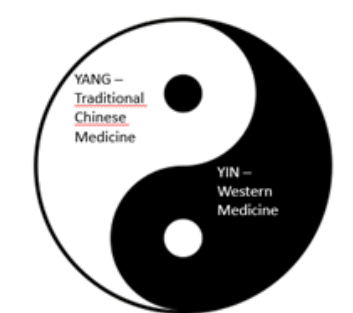
Figure 10: Traditional Chinese Medicine and Western Medicine - Yin and Yang Metaphor.
In this study, we can conclude that the treatment of melasma or chloasma is not restricted only to the treatment of the affected skin in question. This symptom is a signal that there is an imbalance of the internal energy, a possible result of Blood deficiency or alteration of the energy of the Liver, Spleen and Kidney. Treating these energy imbalances, directing the patient to change its feeding habits so as not to worsen the energy imbalance of these affected meridians, will cause the energy that was previously deficient to normalize, therefore reflecting on the face, brightening the darkened spots [30-32].
Each patient is unique, each one has their own energy disturbances, and so they have to be evaluated individually, to have a successful result in their treatment.
